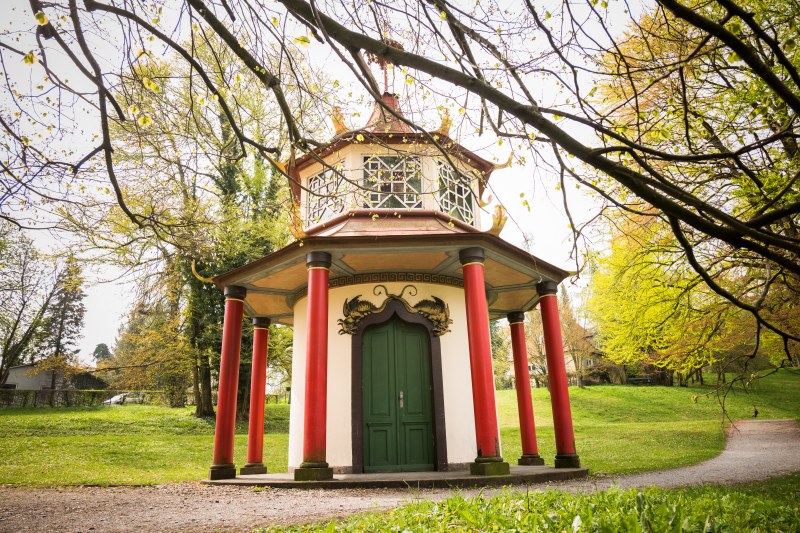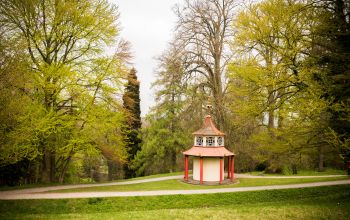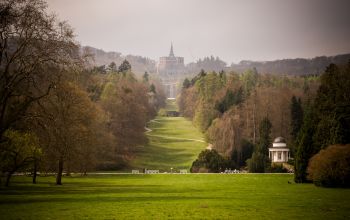Mulang Village - A China-inspired jewel in Kassel (Part 1)
It’s only a few hundred metres from the steps of Wilhelmshöhe Palace in Kassel to the village of Mulang on the other side of the Valley of Flora, named after the Roman goddess of flowering plants. From here, Kassel's landgrave, Frederick II, had an uninterrupted view of the cluster of small huts, stables and workshops that made up his ornamental village. Today, the view is obscured by trees. "It all looked very different here in Frederick II's time," says Tim Schrader, standing in front of the castle. The 29-year-old knows a lot about the history of Mulang Village. As an employee of the Building Affairs and Monument Preservation Department of the Museumslandschaft Hessen Kassel, he is involved in the process that aims to "preserve the buildings here as far as possible and repair them where required", as the professionals put it. In Mulang Village on the south side of the Valley of Flora, one can see what it means to preserve historical buildings and incorporate them into a large ensemble. For the valley and the village as well as Wilhelmshöhe Palace are part of Bergpark Wilhelmshöhe in Kassel, a landscaped area around Wilhelmshöhe Palace that attracts numerous visitors every year.
Diverging forest paths lead from the palace towards Mulang Village. If you meander through the park over to the village today, one thing becomes obvious above all else: how much the centuries have changed everything here, yet at the same time, how well everything has been preserved. Today, admittedly, you have to hunt a little for the original. Mulang sounds Chinese, and the village was in fact built as an ornamental village in the Chinese style, as was fashionable during Landgrave Friedrich II’s time. An ornamental village is just what the name implies: an ornament. Rulers used them to decorate their estates, building such villages as a kind of museum in which rural life, which was already considered as romantic at the time, was reconstructed. The houses were originally meant to be reminiscent of Ancient China, and had curved roof gables and other Far Eastern decorative elements. Today, it is primarily the classicist shaping that catches the eye on first glance, straight lines that seem very European. It is therefore difficult to classify what Mulang really is, for the chinoise style not only included Chinese elements, but also pretty much anything that was considered “exotic” at the time.
Tim Schrader knows the history of the village and points out various details during a tour of it. There is, for example, a small building "where milk used to be stored". Despite being intended as ornamental, the little village was inhabited and used for farming. The landgraves let people live here who simulated rural life for them - with cattle and all the bells and whistles - and at the same time, supplied the landgravial table with agricultural products. Back then, models for this were found all over Europe. There was a one renowned such village at Versailles, at the palace of the French King Louis XIV, a place still synonymous today with a tendency for the extraordinary. Still clearly recognisable as out of the ordinary is the Mulang Pagoda, a sort of small temple that stands in the middle of the ensemble of compact houses, time seeming to just bounce back off it. Its curved roofs do not disguise the fact that the builders at the time took their inspiration from China - "even if the building looks more like a Greek temple," Schrader says. Models from foreign countries were used, but mixed with more familiar architectural styles. And so, Mulang continues to look as unfamiliar yet recognizable today as it did then.
Next article in the series:Mulang Village - A China-inspired jewel in Kassel (Part 2)
Gallery
Published on 30.11.2020
Share on Twitter?
By clicking on this link you leave the Kultur in Hessen website and will be redirected to the website of Twitter. Please note that personal data will be transmitted in the process.
Further information can be found in our privacy policy.
Share on Facebook?
By clicking on this link you leave the Kultur in Hessen website and will be redirected to the website of Facebook. Please note that personal data will be transmitted in the process.
Further information can be found in our privacy policy.













